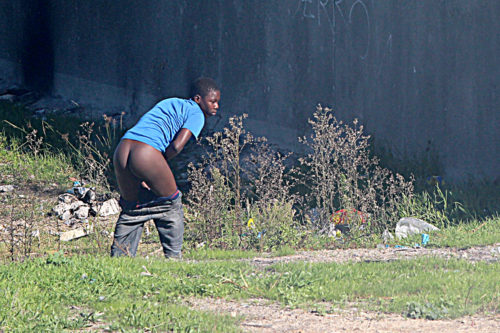Cape Town, which is inhabited by 4 million people including agglomeration, since 2017 has been struck by a draught never experienced before. The capital of the Republic of South Africa might become the first mega police where water taps could be turned off for a longer period. In that case excluding fundamental institutions water could be distributed based on a quota.
The management of the city are eager to persuade locals to save water, however it seems they are only able to postpone and are not able to avoid Day Zero when restrictions apply. Water supply of Cape Town is provided by six dams and reservoirs, the biggest of which, Theewaterskloof is nearly totally dried out. The level of water was 87,9 percent in 2014 though. For three consecutive years water level has been lowering, so that a mere quarter of that amount has remained by now. Day Zero will come along when water level drops below 13.5 percent of the reservoir’s capacity. That situation is a watershed, because under 10 percent of capacity water cannot be cleared properly. That is why there is even less drinking water than it seems. Population of the city has been exploded, so that more and more water is needed. On Day Zero only 25 litres of water per day will be permitted for locals.
At the end of January 2018 permitted (or rather recommended) daily water consumption was lowered to 50 litres per person. If that still seems a lot to anyone, here is another number as a comparison: an average Hungarian family’s daily water consumption is around 600 litres. Besides drinking, water is used and much water flowed away as well for cooking, cleaning up, watering plants and thousands of things. Locals and tourists are expected to cease a shower in 90 seconds, not to fill their bath tubs in any case, to flush toilet as infrequently as possible, not to wash clothes redundantly, and neither to let water flow during cleaning their teeth. Bath plugs have been removed, automatic flush toilets have been switched off at many bars, restaurants and hotels. The majority of locals is eager to comply with regulations. Many of them wash their cars using so called grey water, which is unsuitable for drinking, however there are some who ‘run’ illegal dog washes in the suburbs for a price.
In the middle of February 2018 any day of May was predicted as Day Zero which still seems to be inescapable, if consumption stays at present level. The management of Cape Town are also planning to set up seven desalination plants, with the help of which only some places could be provided really expensive drinking water out of sea water until Day Zero. What makes the situation even worse is that at the very spots of the planned desalination plants long lines of oil tanks can be seen at the moment.
It is almost certain that the western tip of South Africa is going to face periods similar to today’s draught more and more often during the next decades. The question is: how much are they able to prepare for that? Water shortage will mean a challenge to other cities as well in India, Indonesia, Mexico, Brazil and in the southern states of the United States of America. Melbourne could cope with the problem of water shortage from 2028, if the effects of climate change are to stay and the population grows. Local authorities are taking preparation rather seriously there.
A report released by the World Bank in 2017 states that water reservoirs are affected most seriously by climate change and what is more: in various ways. With the Earth warming increasingly much more water evaporates than it did in the previous decades. That is why in certain territories more than usual precipitation can be expected, while other regions could suffer from draught never seen before. The most amount of ice on Earth can be found in the poles and in the huge glaciers of the Himalaya, all of which are gradually disappearing. Water shortage might cause armed conflicts and might increase migration felling entire economies into recession, because 70-90 percent of water is used for watering plants. According to the World Bank 1.6 billion people live in countries suffering from water shortage, however by a report of the World Resources Institute in Washington two third of the world’s population will be affected by the problem by the year 2025.



Leave a Reply